Great Egret, Grote Zilverreiger, Silbereiher, Garça-branca-grande, Garceta Grande
Spotted in the Alentejo region of Portugal. Great Egret sound
The (Western) Great Egret (Ardea alba), also known as the Great White Egret or Common Egret or (now not in use) Great White Heron, is a large egret.
Distributed across most of the tropical and warmer temperate regions of the world, in southern Europe and Asia it is rather localized. In North America it is more widely distributed, and it is ubiquitous across the sun-belt of the United States. It is sometimes confused with the Great White Heron in Florida, which is a white morph of the closely related Great Blue Heron (A. herodias). Note however that the name Great White Heron has occasionally been used to refer to the Great Egret.
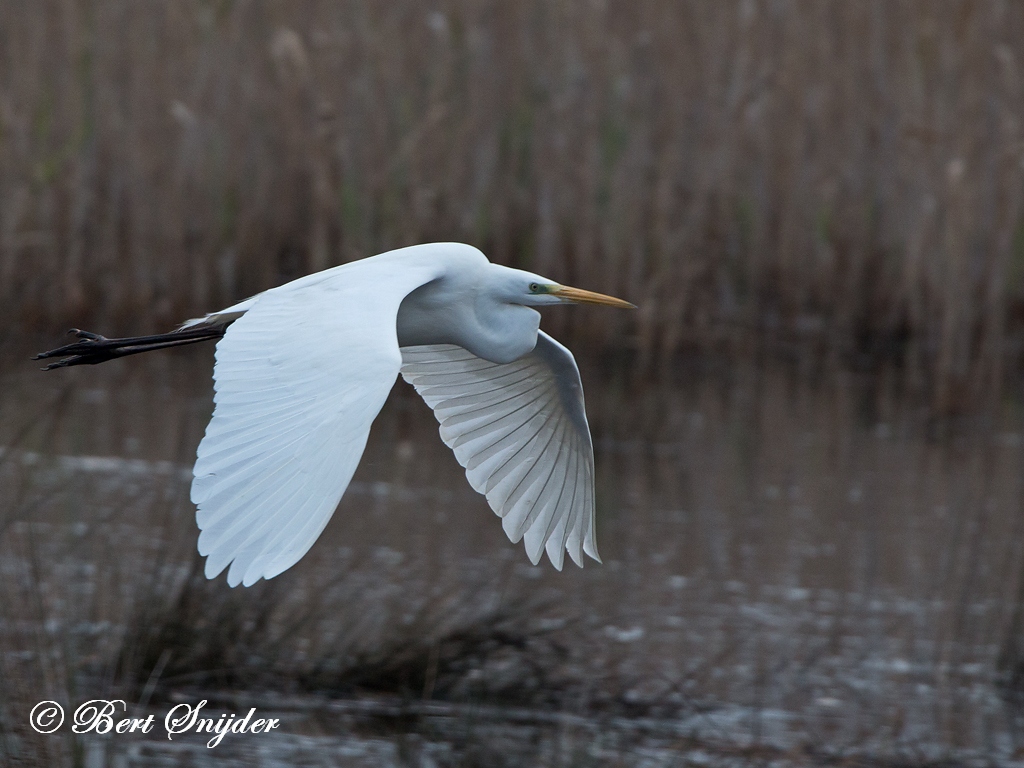
More photos at the bottom of this page:
The Great Egret is a large bird with all-white plumage that can reach one meter in height and weigh up to 950 grams (2.1 lb). It is thus only slightly smaller than the Great Blue or Grey Heron (A. cinerea). Apart from size, the Great Egret can be distinguished from other white egrets by its yellow bill and black legs and feet, though the bill may become darker and the lower legs lighter in the breeding season. In breeding plumage, delicate ornamental feathers are borne on the back. Males and females are identical in appearance; juveniles look like non-breeding adults. It is a common species, usually easily seen. It has a slow flight, with its neck retracted. This is characteristic of herons and bitterns, and distinguishes them from storks, cranes, ibises and spoonbills, which extend their necks in flight.
The Great Egret is not normally a vocal bird; at breeding colonies, however, it often gives a loud croaking cuk cuk cuk.
Like all egrets, it is a member of the heron family, Ardeidae. Traditionally classified with the storks in the Ciconiiformes, the Ardeidae now, under the International Ornithological Congress, are closer relatives of pelicans and belong in the Pelecaniformes instead. The Great Egret – unlike the typical egrets – does not belong to the genus Egretta but together with the great herons is today placed in Ardea. In the past, however, it was sometimes placed in Egretta or separated in a monotypic genus Casmerodius.
There were four subspecies in various parts of the world, which differ but little. Differences are bare part coloration in the breeding season and size; the largest A. a. modesta from Asia and Australasia is now considered a full species, the Eastern Great Egret (Ardea modesta). The remaining three subspecies are:
Ardea alba alba from Europe
Ardea alba egretta from Americas
Ardea alba melanorhynchos from Africa
Parent on nest in a tree with chicks at Morro Bay, California, USA.The Great Egret is partially migratory, with northern hemisphere birds moving south from areas with cold winters. It breeds in colonies in trees close to large lakes with reed beds or other extensive wetlands. It builds a bulky stick nest.
The Great Egret is one of the species to which the Agreement on the Conservation of African-Eurasian Migratory Waterbirds (AEWA) applies.
The Great Egret feeds in shallow water or drier habitats, feeding mainly on fish, frogs, small mammals, and occasionally small birds and reptiles, spearing them with its long, sharp bill most of the time by standing still and allowing the prey to come within its striking distance of its bill which it uses as a spear. It will often wait motionless for prey, or slowly stalk its victim.
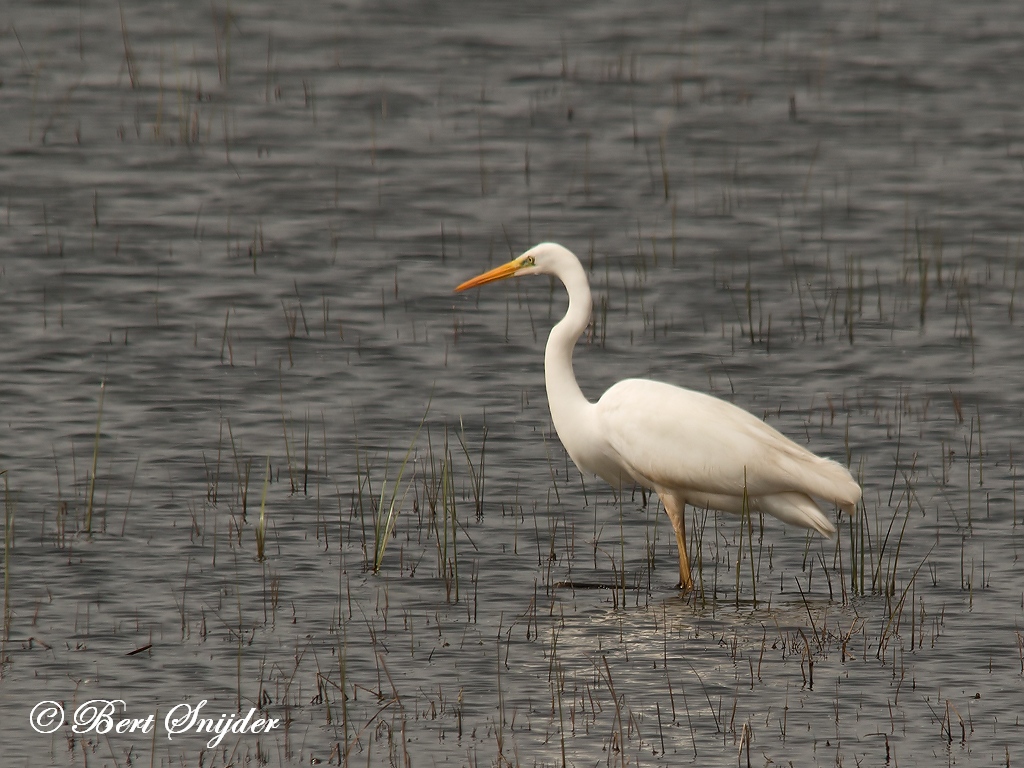
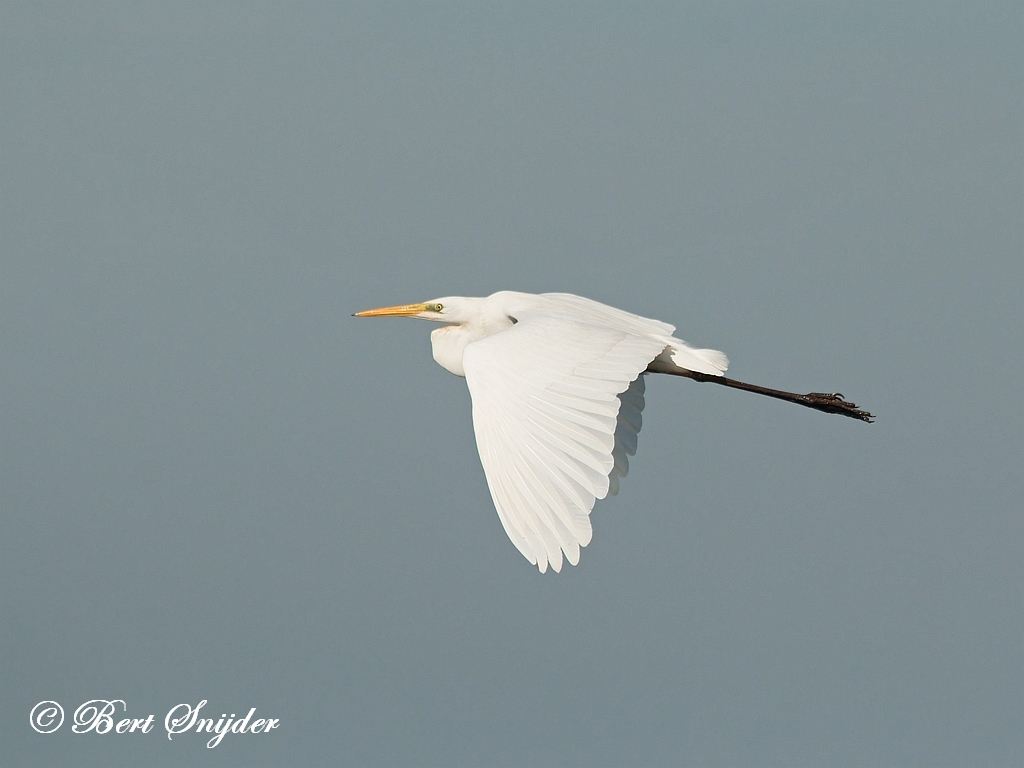
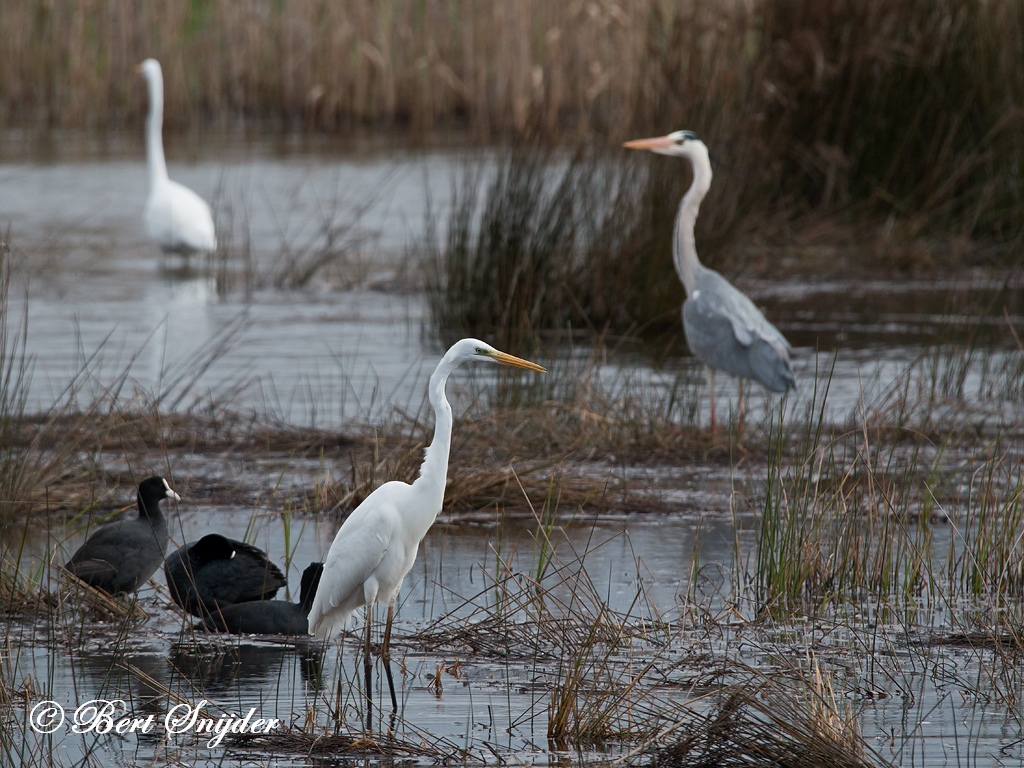

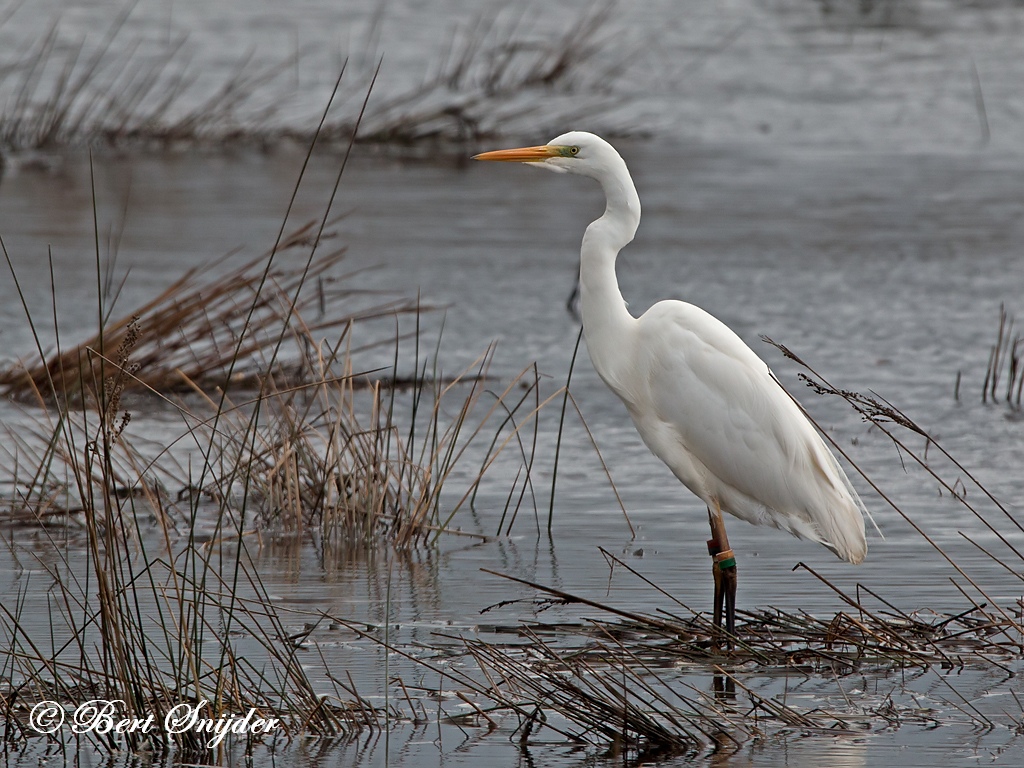
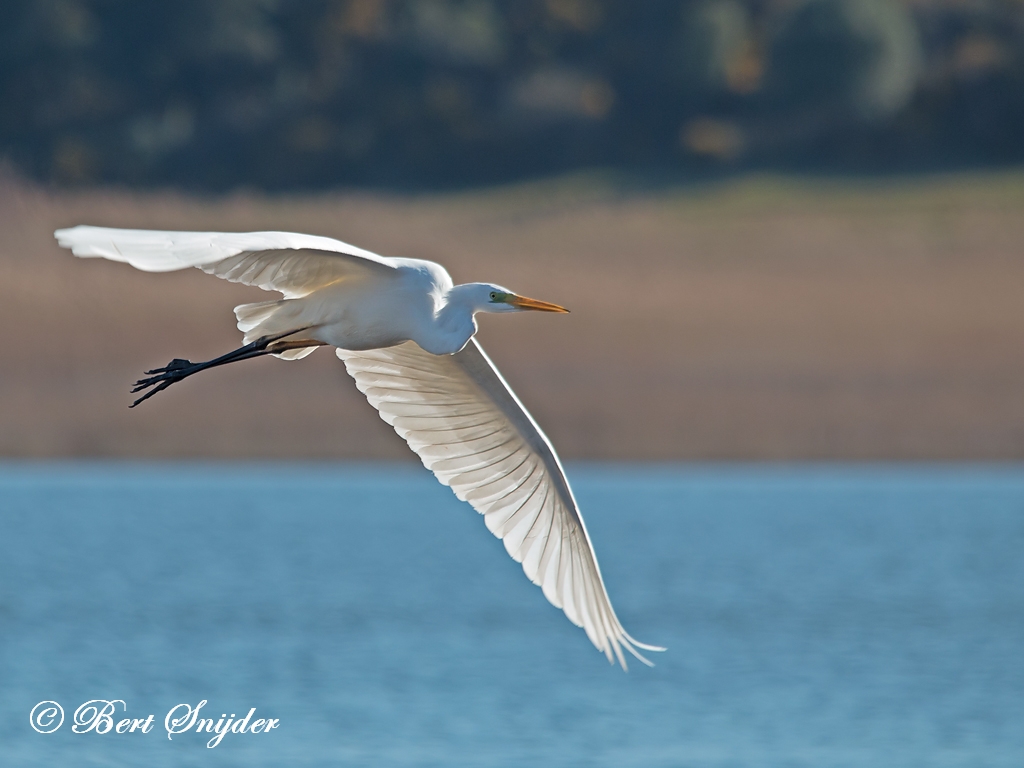
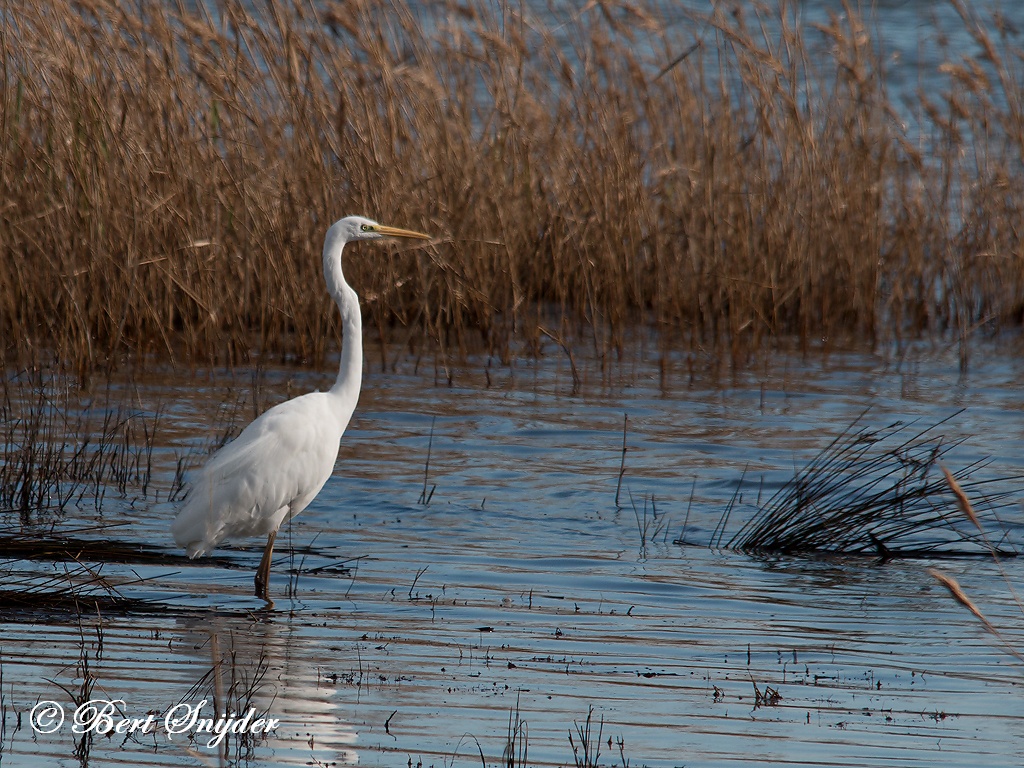
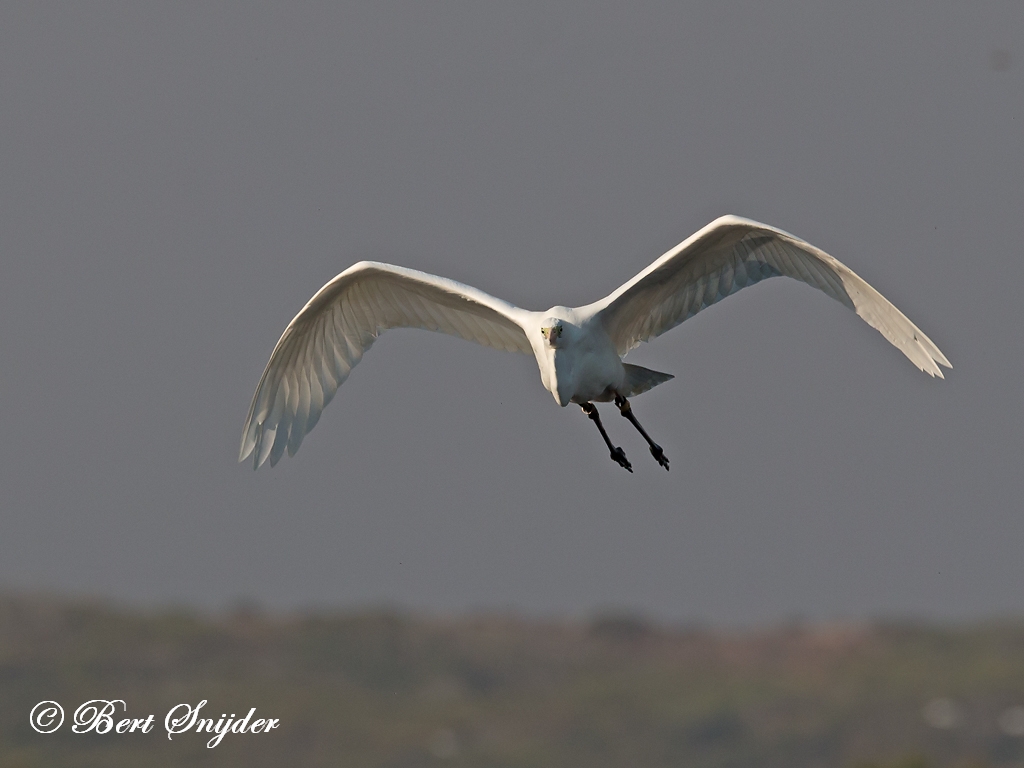

Other synonyms:
Afrikaans: Grootwitreier
Asturian: Garcia Grande
Breton: An herlegon bras
Catalan: Agró blanc, Agró blanc gros
Catalan (Balears): Agró blanc gros
Valencian: Agró blanc
Creoles and Pidgins, French-based (Other): kwabye blanc
Czech: Volavka bílá
Welsh: Crëyr mawr gwyn
Danish: Sølvhejre
German: Silberreiher
English: Great Egret, Great White Egret, Western Great Egret
Esperanto: Granda egretardeo
Spanish: Garceta Grande, garza blanca, Garza Blanca Grande, Garza Grande, Garza Real, Garzón
Spanish (Argentine): Garza blanca
Spanish (Bolivia): Garza blanca
Spanish (Colombia): Garza Real
Spanish (Costa Rica): Garceta Grande
Spanish (Cuba): Garzón
Spanish (Dominican Rep.): Garza Blanca, Garza Real
Spanish (Honduras): Garzón blanco
Spanish (Mexico): garza blanca, Garza Grande
Spanish (Paraguay): Garza blanca
Spanish (Uruguay): Garza Blanca, Garza Blanca Grande
Estonian: Hõbehaigur
Basque: Lertxuntxo handia
Finnish: Jalohaikara
Faroese: Silvurhegri
French: Grande Aigrette
Irish: Éigrit Mhór
Guadeloupean Creole French: Grand crabier blanc
Gaelic: Corra Bhàn Mhòr
Galician: Garzota grande
Guarani: Guyratî
Haitian Creole French: Gwo krabye blanch
Hindi: Chennarai
Croatian: Velika Bijela Caplja
Hungarian: Nagy kócsag
Indonesian: Cangak besar
Icelandic: Mjallhegri
Italian: Airone bianco maggiore
Japanese: daisagi, Dai-sagi
Kwangali: Samunkoma Gomuzera
Latin: Ardea alba, Egretta alba
Lithuanian: Didysis baltasis garnis
Malagasy: Vanofotsy
Maori: Kotuku
Malay: Bangau Besar
Maltese: Russett Abjad
Dutch: Grote Zilverreiger
Norwegian: Egretthegre
Portuguese: Garça-branca-grande
Portuguese (Brazil): Garça-branca-grande
Romansh: Irun alv
Russian: Bolshaya Belaya Tsaplya
Scots: Corra bhan mhor
Slovak: beluša velká, Beluša vel’ká
Shona: Svorechena
Albanian: Çapka e madhe e bardhë
Serbian: velika bijela caplja
Sotho, Southern: Leholosiane
Swedish: Ägretthäger
Swahili: Msuka
Travel Birdwatching Holiday Alentejo, Vacation Portugal for birders to see birds on your trip